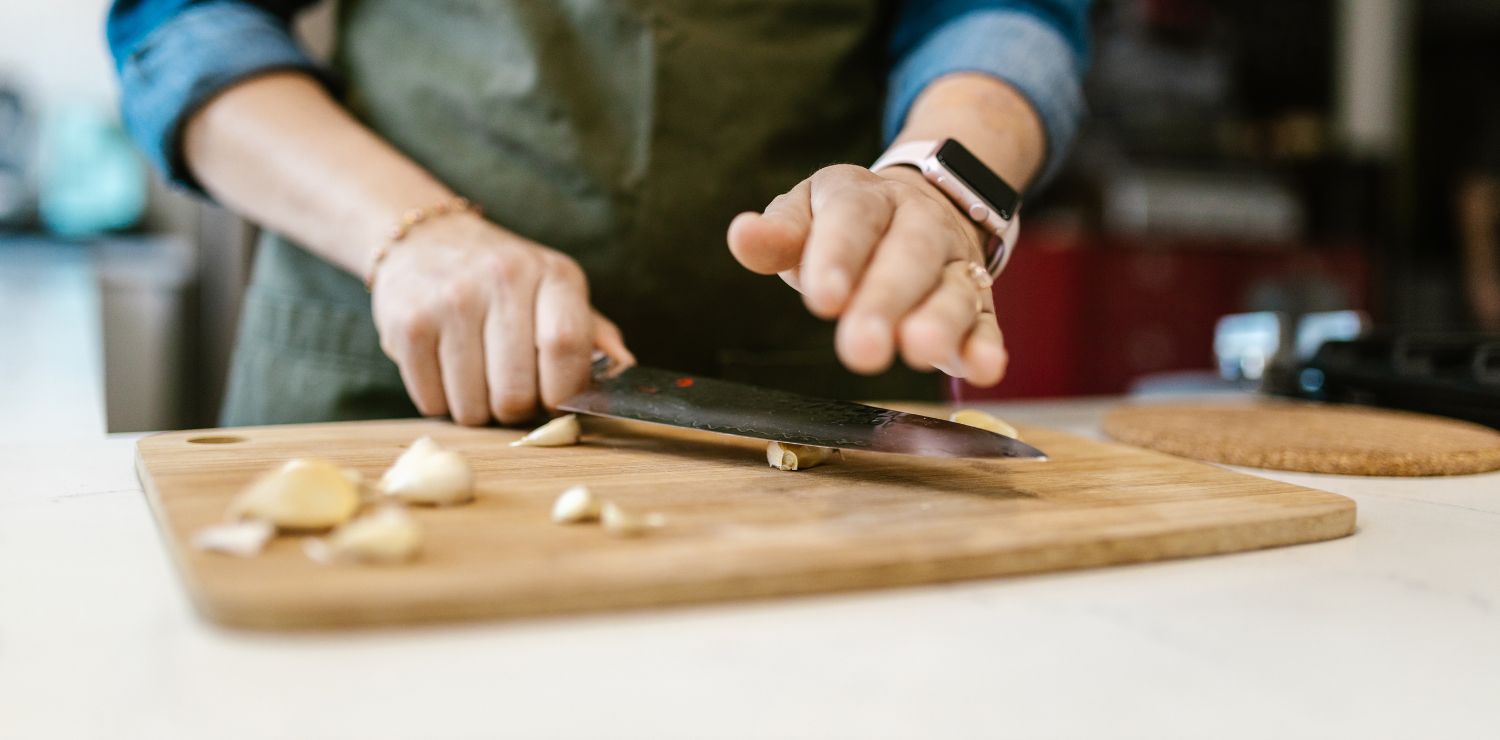Japanese knives were first made hundreds of years ago using ancient sword-forging techniques passed down through generations of blacksmiths. Today, they are prized by professional and novice chefs around the world. With their beauty, expert craftsmanship, and durability, these remarkable knives are essential for anyone passionate about food preparation.
Before purchasing a Japanese knife, it is important to know which knife is used for which task. This will extend the life of your knives and make everything from cutting meat to chopping herbs easier.
SANTOKU KNIVES
The Santoku knife is widely recognized as an all-purpose chef's knife because it is versatile and similar in appearance to the Western-style chef's knife. Originally designed for home use, it quickly became adopted in a variety of professional and home settings. Here are some notable features of a Santoku knife:
- Curved tip
- Double bevel
- Thin blade
The thinness of the Santoku blade makes the knife very suitable for cutting thin slices with ease. In addition, Santoku knives offer great functionality and maneuverability, making them suitable for general cutting, dicing, and mincing.
When holding a Santoku knife, use your thumb and index finger to lightly pinch the blade while letting the rest of your fingers hold the handle. You can then cut using a backsliding or forward-sliding motion. Push-and-pull slicing techniques are effective and less harsh on the blade, although you can gently rock the knife when chopping herbs. Just avoid aggressive downward cuts that can dull the knife's edge.
NAKIRI KNIVES
A Nakiri knife is a Japanese knife intended for vegetables. This knife has a few qualities that distinguish it from other knives:
- Double bevel
- Rectangular shape
- Blunt tip
Nakiri knives are excellent for cutting all kinds of vegetables, whether you are chopping, mincing, slicing or dicing them. A Nakiri knife can also be used to cut fruit. One feature that sets the Nakiri apart from the Santoku is that you can use an up and down motion when using it, rather than the rocking or sliding technique. That said, just like the Santoku, the thinness of the blade makes a push or pull cut extremely effective.
CHEF'S KNIVES
Like the Santoku knife, the chef's knife is similar to the Western chef's knife. Chef's knives are versatile and can be identified by these characteristics:
- Curved blade
- Flat heel
- Pointed tip
You can use a chef's knife to cut, chop, slice, and dice vegetables, fruits, meats, and fish. You can even use it to disjoint cuts of meat. The chef's knife has a sharper tip that is usually more curved than the Santoku, making it easier to use in a swinging cutting motion. You can use a variety of cutting techniques with the chef's knife, although you should avoid hard cuts and tough items like cartilage and bone.
BUY JAPANESE KNIVES ONLINE
With Kaitsuko, you can buy Japanese knives that transform the way you prepare your meals. Our handcrafted knives made by blacksmiths across Japan are created by master craftsmen.
Our complete selection of Kaitsuko knives includes the knives mentioned above, as well as several other types precision crafted from high-quality steel.







Traditional Japanese Kitchen Knife Craftsmanship
Giving a Knife: A Unique and Timeless Gift for Cooking Enthusiasts